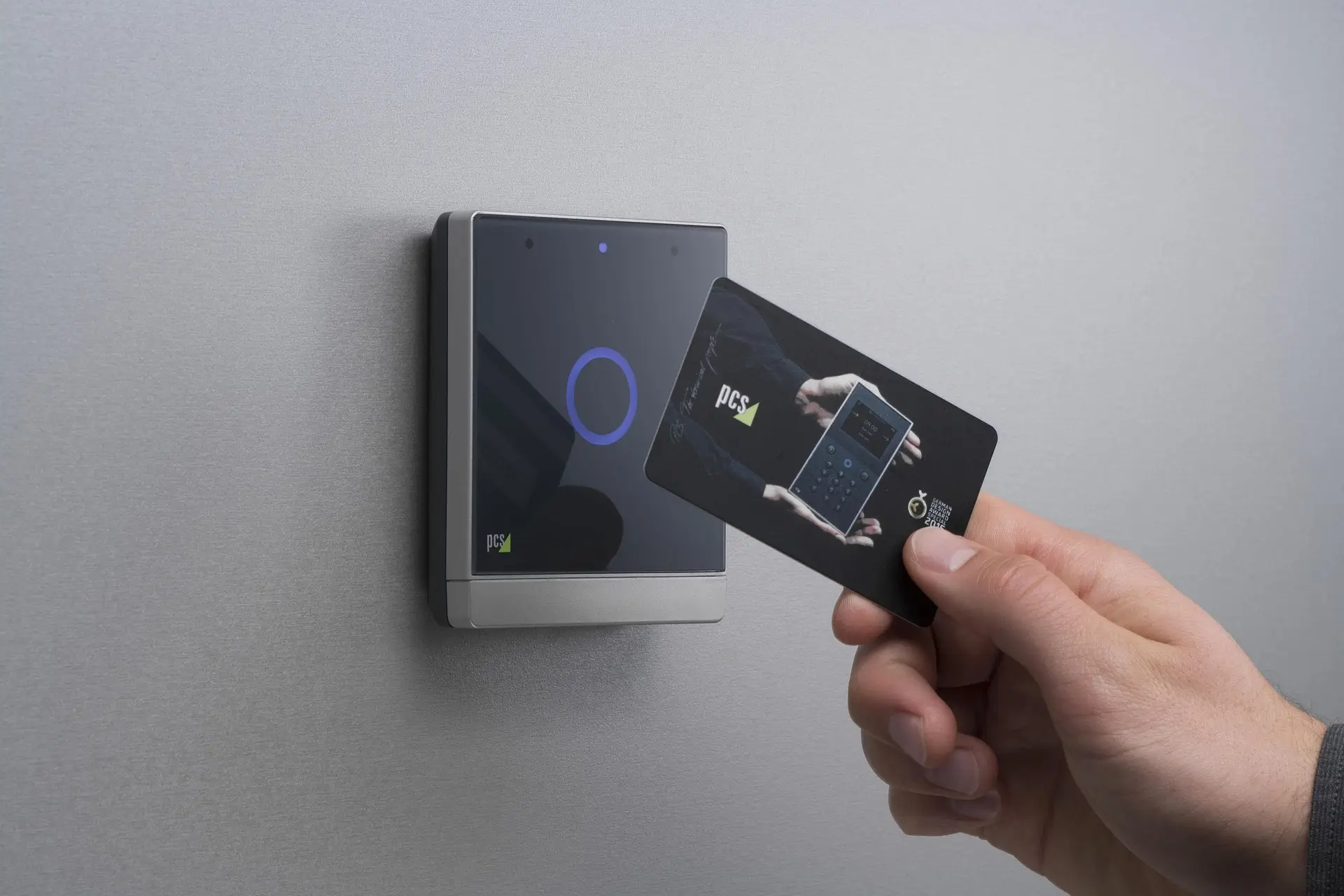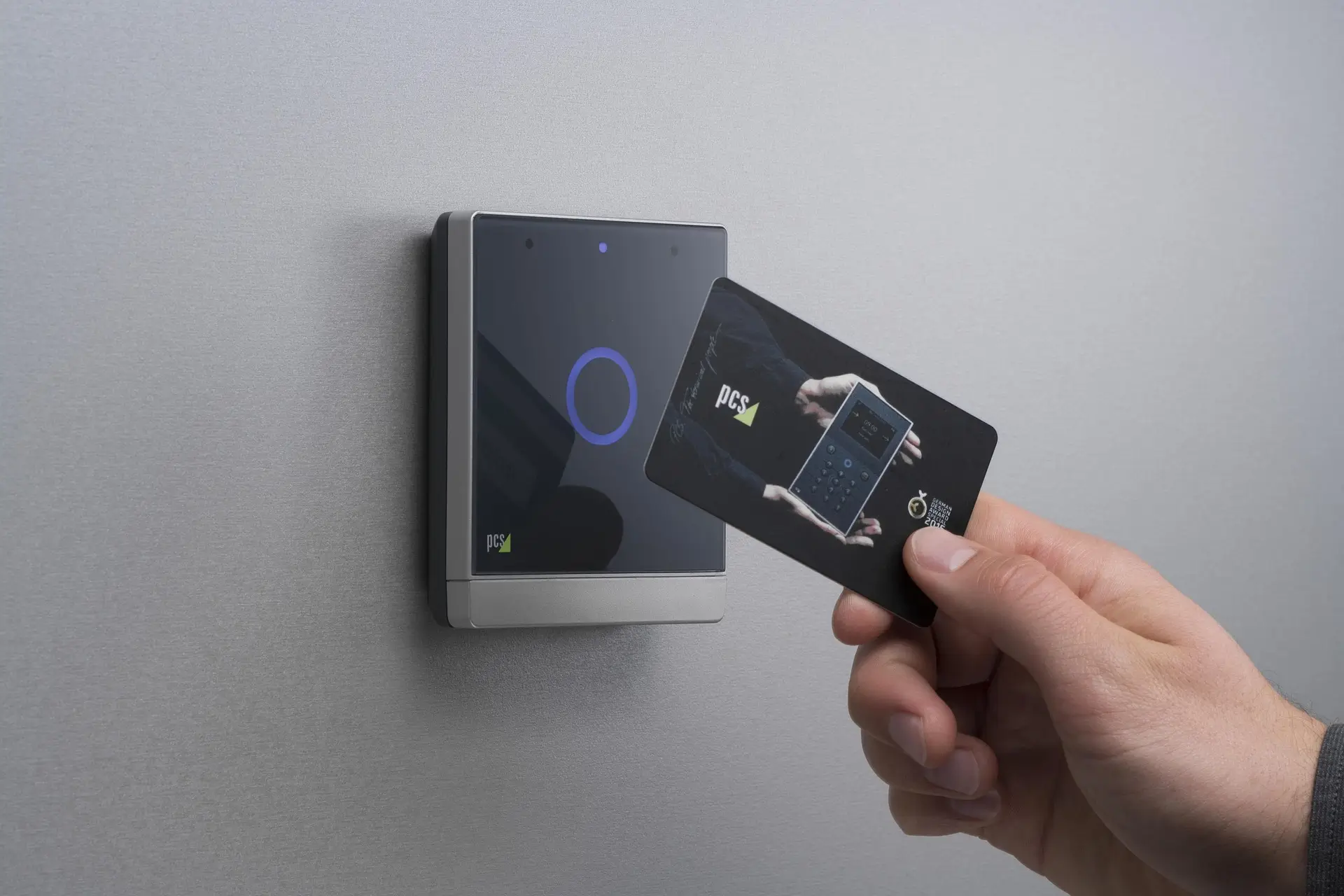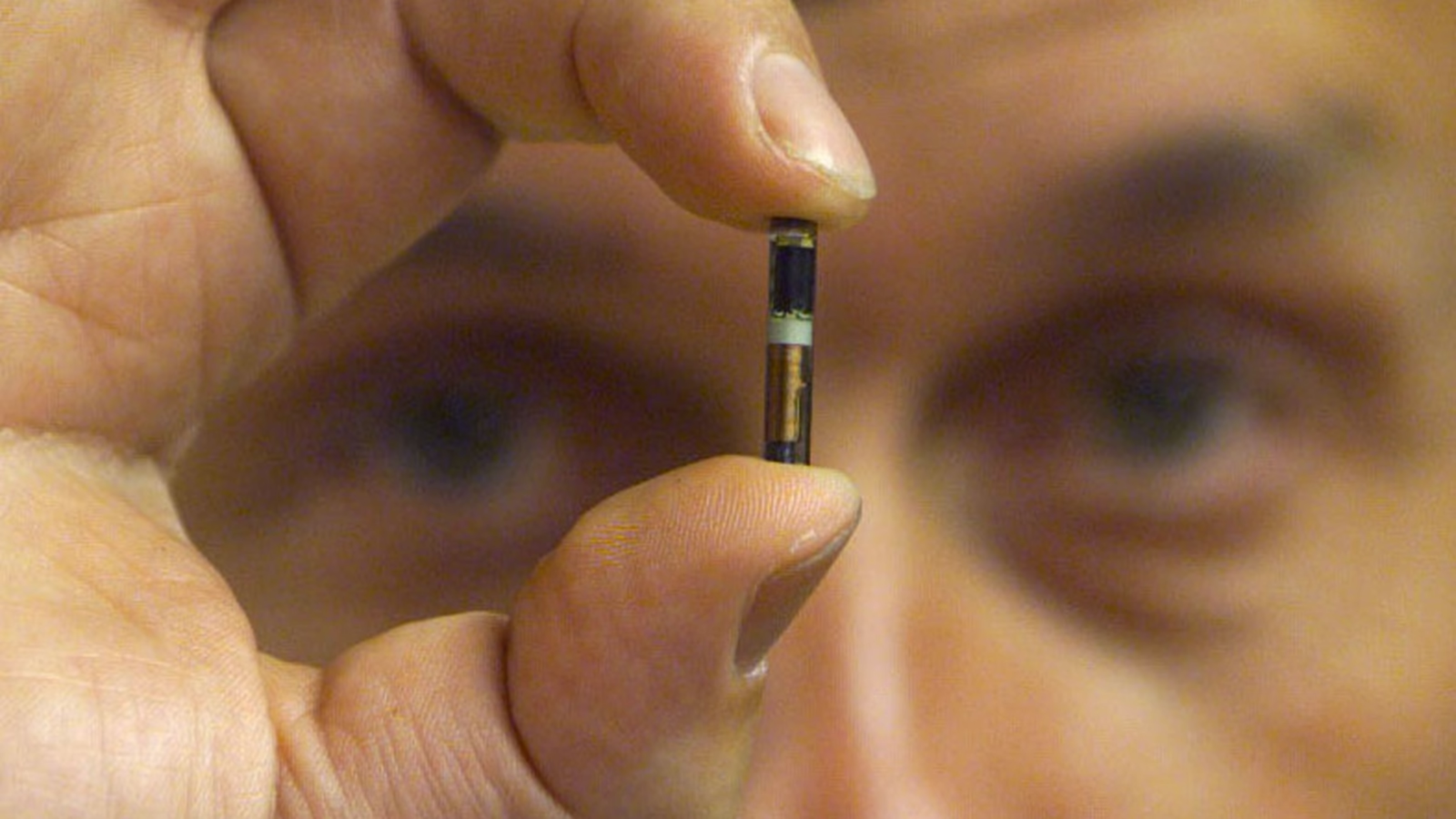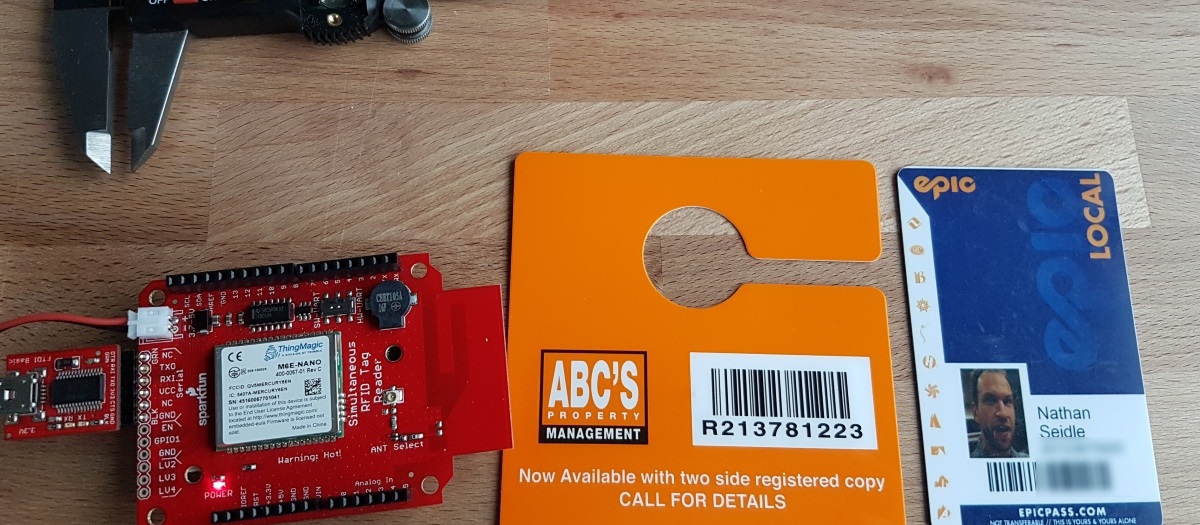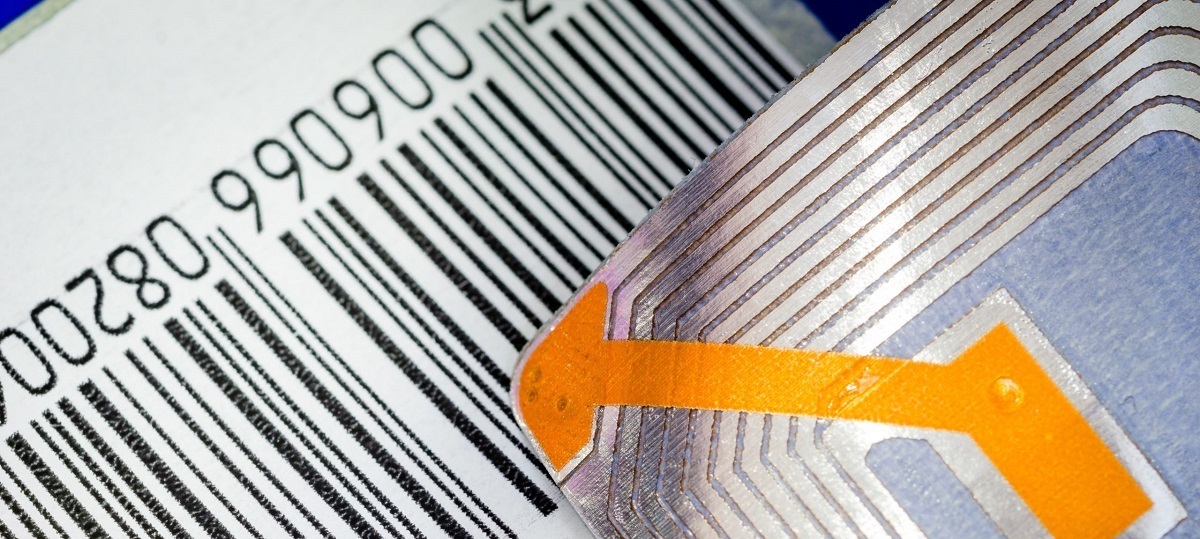Introduction
RFID (Radio Frequency Identification) technology has revolutionized the way we track and manage inventory, assets, and even living beings. By using radio waves to transmit data, RFID systems have become an integral part of various industries, including retail, logistics, healthcare, and more. However, with the increasing reliance on RFID technology, ensuring its security and integrity has become a critical concern.
RFID fuzzing is an essential technique used to test the vulnerabilities and robustness of RFID systems. By intentionally injecting malformed or unexpected data into the system, a fuzzing tool helps identify weaknesses and potential security loopholes. Understanding the concept of RFID fuzzing is crucial for system administrators, security professionals, and developers to strengthen the security of RFID deployments.
In this article, we will explore the fundamentals of RFID fuzzing, its importance, and its applications in various industries. We will delve into the different types of fuzzing techniques used in RFID and the benefits it provides. Additionally, we will discuss the challenges and limitations associated with RFID fuzzing and how they can be overcome.
Whether you are a security enthusiast looking to understand RFID vulnerabilities or an industry professional exploring ways to secure your RFID systems, this article will provide you with a comprehensive overview of RFID fuzzing and its implications.
What is RFID?
Radio Frequency Identification, commonly known as RFID, is a technology that uses radio waves to identify and track objects or individuals. It consists of two main components: an RFID tag or transponder and an RFID reader. The tag, typically a small electronic device, contains a unique identifier and other relevant data. The reader emits radio waves and captures the responses from nearby RFID tags.
RFID has gained widespread adoption due to its ability to enhance efficiency, streamline processes, and improve inventory management. Unlike traditional barcode systems, RFID does not require line-of-sight scanning, enabling multiple tags to be read simultaneously and at a greater distance. This makes RFID ideal for use in various industries, such as retail, supply chain management, healthcare, and asset tracking.
An RFID system comprises different frequency bands, including low frequency (LF), high frequency (HF), and ultra-high frequency (UHF). Each frequency band has its advantages and use cases. For instance, LF RFID is commonly used for access control systems, while UHF RFID is suitable for inventory tracking applications due to its long-range capabilities.
RFID technology is versatile and can be implemented in various forms, including passive, active, and semi-passive tags. Passive RFID tags rely on the energy transmitted by the reader to power the tag and initiate communication, making them cost-effective and suitable for tracking assets or inventory. Active tags, on the other hand, have their power source and can send and receive signals over longer distances.
Overall, RFID technology has transformed the way businesses operate by providing accurate and real-time data, improving supply chain visibility, reducing manual labor, and preventing theft or loss. However, like any technology, RFID systems are not immune to vulnerabilities and security threats, which is where RFID fuzzing plays a crucial role.
What is a Fuzzer?
In the realm of software testing and security analysis, a fuzzer is a tool used to detect vulnerabilities by sending unexpected or malformed data inputs to a target system. Its purpose is to identify weaknesses in software or hardware that could potentially be exploited by attackers. In the case of RFID systems, an RFID fuzzer is specifically designed to test the robustness and security of RFID implementations.
A fuzzer operates by generating a large number of test cases, which are then systematically sent to the target system. These test cases are intentionally crafted to include invalid, unexpected, or boundary-breaking data inputs. By doing so, the fuzzer aims to trigger abnormal behaviors, crashes, or security vulnerabilities in the target system, potentially revealing hidden weaknesses that could be exploited by malicious actors.
The primary goal of using a fuzzer, including an RFID fuzzer, is to uncover vulnerabilities and assess the resilience of RFID systems against different types of attacks. By simulating real-world scenarios and injecting a wide range of input variations, a fuzzer can help identify potential security flaws that might have been overlooked during the development and testing phases.
There are different types of fuzzers available, including dumb fuzzers, smart fuzzers, and mutation-based fuzzers. Dumb fuzzers randomly generate inputs without any specific logic or knowledge about the target system. Smart fuzzers, on the other hand, use heuristics or predefined rules to generate more targeted and informed test cases. Mutation-based fuzzers modify existing valid inputs to create variations and test the system’s response to these mutations.
While fuzzing is an effective technique for finding vulnerabilities, it is important to note that it is not a silver bullet solution. Fuzzers can only discover vulnerabilities in the parts of the system they are designed to test, and they may miss more complex or subtle vulnerabilities. Therefore, fuzzing should be used as part of a comprehensive security testing strategy, complemented by other testing methods and best practices such as code review, penetration testing, and secure coding guidelines.
In the context of RFID systems, an RFID fuzzer is critical to ensuring the security and reliability of these systems. By exposing potential vulnerabilities and weaknesses, an RFID fuzzer enables developers and security professionals to address these issues proactively and enhance the overall security posture of the RFID deployments.
Why is Fuzzing Important in RFID?
Fuzzing plays a crucial role in enhancing the security and reliability of RFID systems. As RFID technology becomes more prevalent across various industries, the need to identify and address vulnerabilities and weaknesses in these systems becomes paramount. Here are several reasons why fuzzing is important in the context of RFID:
- Identifying security vulnerabilities: Fuzzing allows security professionals to uncover security vulnerabilities that could be exploited by attackers. By sending unexpected or malformed data inputs to RFID systems, fuzzers can reveal potential weaknesses in the system’s handling of invalid inputs or unexpected scenarios.
- Evaluating system robustness: Fuzzing helps assess the robustness of RFID systems by testing their resilience to various types of attacks. By subjecting the system to a wide range of input variations, including edge cases and boundary-breaking inputs, fuzzers can identify how well the system handles abnormal or unexpected data, crashes, or hangs.
- Enhancing system reliability: Fuzzing aids in improving the reliability of RFID systems by uncovering bugs or software defects that may cause system instability or unexpected behavior. By identifying and fixing these issues, developers can ensure that the system operates smoothly and consistently in real-world scenarios.
- Compliance with security standards: Many industries have specific security standards and regulations that need to be adhered to when implementing RFID systems. Fuzzing can help organizations meet these compliance requirements by verifying the system’s security posture and ensuring that all vulnerabilities or weaknesses are addressed.
- Preventing potential attacks: By proactively identifying and addressing vulnerabilities through fuzzing, organizations can prevent potential attacks before they can be exploited by malicious actors. This proactive approach helps reduce the risk of data breaches, unauthorized access, or other security incidents.
Overall, fuzzing is crucial in the context of RFID systems as it helps uncover vulnerabilities, evaluate system robustness, enhance reliability, ensure compliance, and prevent potential attacks. Incorporating fuzzing into the development and testing processes of RFID systems can significantly improve their overall security and reduce the risk of security breaches or system failures.
How Does an RFID Fuzzer Work?
An RFID fuzzer is specifically designed to test the robustness and security of RFID systems by injecting malformed or unexpected data inputs. It works by simulating real-world scenarios and sending a wide range of test cases to the target system to identify potential vulnerabilities. Here’s how an RFID fuzzer typically operates:
- Test case generation: The fuzzer generates a large number of test cases using various mutation techniques, heuristics, or predefined rules. These test cases include both valid and invalid inputs to cover a wide range of scenarios.
- Injecting test cases: The fuzzer sends the generated test cases to the target RFID system, typically through the RFID reader or communication interface. The test cases may include malformed data, unexpected inputs, boundary values, or other variations.
- Monitoring system response: The fuzzer closely monitors the system’s response to each test case. It analyzes the behavior of the target system, looking for any unexpected or abnormal responses such as crashes, hangs, incorrect data processing, or security vulnerabilities.
- Logging and reporting: The fuzzer logs the results of each test case, including any detected issues, vulnerabilities, or abnormalities. This information is essential for further analysis and remediation.
- Iterating and refining: Based on the initial results, the fuzzer may refine its test case generation strategy to focus on areas that exhibit vulnerabilities or potential weaknesses. The process is repeated iteratively to improve the effectiveness of the fuzzing process.
An RFID fuzzer leverages its knowledge of the RFID protocol and system architecture to create test cases that encompass various aspects of the RFID implementation. It aims to uncover vulnerabilities such as buffer overflows, input validation flaws, protocol weaknesses, or issues with privacy and authentication mechanisms.
It is important to note that the effectiveness of an RFID fuzzer depends on the quality and diversity of the test cases generated. The fuzzer should consider both expected and unexpected inputs, stress the system’s limits, and explore different attack vectors to ensure comprehensive coverage.
By using an RFID fuzzer, organizations can proactively identify and address vulnerabilities in their RFID systems, improving their security and overall resilience against potential attacks. Regular fuzzing, combined with other security testing methods, helps ensure the ongoing security and reliability of RFID deployments.
Types of RFID Fuzzing
RFID fuzzing encompasses several different techniques and approaches to test the security and robustness of RFID systems. Here are some of the common types of RFID fuzzing:
- Protocol Fuzzing: This type of fuzzing focuses on manipulating the data sent through the RFID protocol to identify vulnerabilities. It involves modifying the fields, parameters, or payloads in the RFID communication to test how the system handles unexpected or malformed data.
- Timing Fuzzing: Timing-based fuzzing involves manipulating the timing characteristics of the RFID system to expose potential vulnerabilities. By injecting delays or altering the timing between RFID reader and tag communication, this technique can reveal synchronization or timing-related weaknesses in the system.
- Boundary Fuzzing: Boundary fuzzing aims to test the limits of the RFID system by providing inputs that are close to or beyond the defined boundaries. It focuses on sending data that are at the edge of permissible values or input lengths, aiming to detect buffer overflow, input validation, or memory corruption vulnerabilities.
- Format Fuzzing: Format fuzzing involves altering the structure and formatting of the RFID data to detect vulnerabilities in how the system parses, processes, or interprets the RFID information. This technique aims to identify flaws in data handling, parsing algorithms, or encoding/decoding functions.
- Command Fuzzing: Command fuzzing targets the command set or instructions used in RFID communication. It involves sending unexpected or invalid commands to the RFID system to assess its response and identify any vulnerabilities or undocumented features that could be exploited.
- Stateful Fuzzing: Stateful fuzzing focuses on emulating complex, real-world scenarios by maintaining state information during the fuzzing process. It involves interacting with the RFID system in a meaningful sequence of steps to mimic the behavior of an actual RFID deployment, enabling the discovery of vulnerabilities that can only be triggered in certain system states.
Each type of fuzzing technique has its strengths and focuses on different aspects of the RFID system. A combination of these techniques, along with a diverse and comprehensive test case generation strategy, can provide a more thorough assessment of the system’s vulnerabilities and weaknesses.
It is important to tailor the fuzzing approach based on the specific RFID system and its protocol implementation. The choice of fuzzing technique will depend on factors such as the complexity of the RFID system, the potential attack vectors, and the desired depth of vulnerability scanning.
By employing a variety of fuzzing techniques, organizations can ensure that their RFID systems are thoroughly tested for security vulnerabilities, reducing the risk of unauthorized access, information leakage, or disruption of service.
Fuzzing Techniques Used in RFID
When conducting fuzzing on RFID systems, various techniques can be employed to generate test cases and identify vulnerabilities. These techniques are designed to target different aspects of the RFID system and its implementation. Here are some of the common fuzzing techniques used in RFID:
- Random Fuzzing: Random fuzzing involves generating test cases by randomly modifying or mutating valid inputs. This technique aims to explore different combinations of data and identify any unexpected system behavior.
- Template-Based Fuzzing: Template-based fuzzing uses predefined templates or patterns to generate test cases. These templates define the structure and format of the inputs, enabling the fuzzer to create valid or invalid inputs that follow specific rules or patterns.
- Grammar-Based Fuzzing: Grammar-based fuzzing leverages context-free grammars to generate test cases. By defining the grammar rules for valid inputs, the fuzzer can generate a large number of inputs that adhere to the specified structure and syntax.
- Mutation-Based Fuzzing: Mutation-based fuzzing modifies existing valid inputs to create variations and generate test cases. This technique can include changing values, flipping bits, truncating or expanding inputs, or applying other random mutations to test the system’s response to these variations.
- Syntax-Aware Fuzzing: Syntax-aware fuzzing focuses on the understanding and manipulation of the syntax and structure of the RFID protocol. By intelligently generating test cases that follow the expected syntax, this technique aims to explore the different paths and edge cases in the system’s parsing and handling of the RFID data.
- Protocol-Aware Fuzzing: Protocol-aware fuzzing takes into consideration the specific RFID protocol being used and its underlying specifications. By understanding the protocol’s structure, message exchange, and relevant parameters, this technique can generate test cases that target specific aspects of the protocol implementation and identify potential vulnerabilities.
- Intelligent Fuzzing: Intelligent fuzzing utilizes machine learning or artificial intelligence techniques to guide the generation of test cases. By analyzing the system’s responses and learning from previous test cases, the fuzzer can dynamically adjust its input generation strategy to focus on areas that exhibit vulnerabilities.
These fuzzing techniques can be combined or used individually, depending on the specific goals and requirements of the RFID system being tested. It is important to carefully choose and customize the fuzzing techniques based on the system’s architecture, protocols, and potential attack vectors.
By employing a diverse set of fuzzing techniques, organizations can effectively identify vulnerabilities, assess the robustness of their RFID systems, and improve the overall security posture of their deployments.
Benefits of Using an RFID Fuzzer
Utilizing an RFID fuzzer as part of the security testing and development process offers several significant benefits. It enables organizations to proactively identify and address vulnerabilities, enhance the security and reliability of RFID systems, and mitigate potential risks. Here are some key benefits of using an RFID fuzzer:
- Vulnerability Discovery: An RFID fuzzer helps uncover security vulnerabilities and weaknesses that might exist in an RFID system. By generating test cases with malformed or unexpected inputs, the fuzzer can expose vulnerabilities such as buffer overflows, input validation flaws, or protocol weaknesses that may have been overlooked during development and testing.
- Robustness Assessment: Through fuzzing, organizations can evaluate the robustness of their RFID systems under various attack scenarios. Fuzzing tests the system’s resilience to abnormal or unexpected data inputs and exposes any potential crashes, hangs, or incorrect behaviors that may occur in real-world situations.
- Security Enhancement: By identifying and addressing vulnerabilities, an RFID fuzzer enables organizations to enhance the security of their RFID deployments. Fixing discovered weaknesses helps prevent unauthorized access, data breaches, or other security incidents that could lead to financial losses, reputation damage, or compliance issues.
- Compliance and Regulations: Many industries have specific regulations and security standards that need to be adhered to when deploying RFID systems. Incorporating an RFID fuzzer as part of the security testing process can help ensure compliance with these regulations. By identifying vulnerabilities and resolving them, organizations can meet the required security standards.
- Cost-Effectiveness: Early detection and resolution of vulnerabilities through fuzzing can potentially save organizations significant financial resources. Addressing vulnerabilities during the development phase is more cost-effective compared to dealing with the consequences of a security breach or system failure after deployment.
- Preventing Exploitation: By proactively identifying and fixing vulnerabilities through fuzzing, organizations can prevent potential exploitation by malicious actors. This mitigates the risk of data theft, unauthorized access, or disruption of operations, protecting valuable assets and sensitive information.
Overall, using an RFID fuzzer provides organizations with a proactive approach to identify vulnerabilities, enhance system security, ensure regulatory compliance, and reduce financial and reputational risks. By incorporating fuzzing as part of the development and testing processes, organizations can be confident in the security and reliability of their RFID systems.
Challenges and Limitations of RFID Fuzzing
While RFID fuzzing is an effective technique for identifying security vulnerabilities in RFID systems, it also comes with certain challenges and limitations. Understanding these challenges is crucial for organizations to effectively leverage fuzzing and address its limitations. Here are some of the key challenges and limitations of RFID fuzzing:
- Protocol Complexity: RFID protocols can be complex, with multiple layers and specifications. Fuzzing such protocols requires in-depth understanding and knowledge of the intricacies of the specific RFID protocol being tested.
- Test Case Generation: Generating diverse and comprehensive test cases can be challenging. Creating test cases that cover a wide range of inputs, edge cases, and attack scenarios while exploring all aspects of the RFID system can be time-consuming and require specialized expertise.
- Effectiveness: The effectiveness of a fuzzer depends on the quality and variety of the test cases generated. Fuzzing may not uncover all vulnerabilities, particularly those that are more complex or require specific sequences of actions or states to trigger.
- False Positives: Fuzzing can generate false positive results, indicating vulnerabilities or issues that may not pose actual threats or are not exploitable in practical scenarios. This can create confusion and waste valuable resources if not properly managed.
- Resource Intensiveness: Fuzzing can be computationally and resource-intensive, requiring significant computing power and time to execute a large number of test cases. This may limit its practicality for larger or more complex RFID systems.
- Specialized Knowledge: Effective utilization of an RFID fuzzer requires specialized knowledge of RFID systems, protocols, and potential attack vectors. Organizations may need to invest in training or seek external expertise to maximize the benefits of fuzzing.
- Threat Evolution: As RFID technology and attacks evolve, the efficacy of fuzzing techniques may diminish over time. Fuzzing needs to adapt and evolve alongside the changing threat landscape to remain effective.
Despite these challenges and limitations, RFID fuzzing remains an invaluable tool for identifying and mitigating security vulnerabilities in RFID systems. By understanding and addressing these limitations, organizations can design a comprehensive security testing strategy that combines fuzzing with other techniques to ensure the security and reliability of their RFID deployments.
Industry Applications of RFID Fuzzing
The application of RFID fuzzing extends to various industries where RFID technology is utilized. Implementing RFID fuzzing as part of the security testing process can help ensure the integrity, resilience, and security of RFID systems. Here are some industry applications where RFID fuzzing plays a vital role:
- Retail: In the retail industry, RFID technology is used for inventory management, supply chain optimization, and anti-theft purposes. Fuzzing RFID systems in retail helps identify vulnerabilities that could potentially lead to inventory discrepancies, unauthorized access, or counterfeit product infiltration.
- Logistics and Supply Chain: RFID plays a crucial role in tracking goods, shipments, and assets throughout the supply chain. Fuzzing RFID systems in logistics helps ensure the reliability and security of these systems, preventing potential disruptions, unauthorized access, or tampering of goods.
- Healthcare: RFID is used in healthcare settings for medication tracking, patient identification, equipment management, and more. Fuzzing RFID systems in the healthcare industry safeguards the privacy of patient data, prevents medical identity theft, and ensures efficient and accurate healthcare operations.
- Transportation and Automotive: RFID is employed in transportation and automotive applications for toll collection, parking access, vehicle tracking, and maintenance management. Fuzzing these systems helps detect vulnerabilities that could lead to unauthorized access, data manipulation, or tampering with critical vehicle information.
- Agriculture and Livestock: RFID is utilized in agriculture and livestock industries for tracking and monitoring livestock, crop management, and product traceability. Fuzzing RFID systems in this domain ensures the secure identification and traceability of agricultural products and livestock, preventing fraudulent activities and ensuring food safety.
- Access Control and Security: RFID is prevalent in access control and security systems, providing convenient and efficient means for securing premises and managing personnel access. Fuzzing these systems helps reveal vulnerabilities that could compromise the security and integrity of access control mechanisms, preventing unauthorized entry and potential security breaches.
These are just a few examples of industries where RFID technology is widely used, and where fuzzing plays a critical role in maintaining the security and reliability of RFID systems. By performing rigorous fuzzing tests, organizations in these industries can ensure the resilience of their RFID deployments and provide enhanced security for their operations, assets, and customers.
Conclusion
RFID fuzzing is an essential technique for assessing the security, reliability, and robustness of RFID systems. By injecting malformed or unexpected data inputs, an RFID fuzzer helps identify vulnerabilities that could potentially lead to unauthorized access, data breaches, or system failures. Understanding the fundamentals of RFID fuzzing is crucial for organizations and professionals involved in RFID deployments.
In this article, we explored the definition and applications of RFID technology, as well as the concept of fuzzing and its importance in the context of RFID systems. We discussed the various types of fuzzing techniques used in RFID, such as protocol fuzzing, timing fuzzing, and boundary fuzzing.
Furthermore, we highlighted the benefits of using an RFID fuzzer, including vulnerability discovery, robustness assessment, security enhancement, compliance with regulations, cost-effectiveness, and the prevention of potential attacks. However, it’s important to acknowledge the challenges and limitations of RFID fuzzing, such as protocol complexity, test case generation, false positives, resource intensiveness, specialized knowledge requirement, and the need to adapt to evolving threats.
Finally, we examined the industry applications of RFID fuzzing in sectors such as retail, logistics and supply chain, healthcare, transportation and automotive, agriculture and livestock, and access control and security. Fuzzing these systems ensures the reliability and security of RFID deployments in these domains.
By incorporating RFID fuzzing into the development and testing processes, organizations can effectively identify vulnerabilities, enhance the security of their RFID systems, and mitigate potential risks. Regular fuzzing, along with other security testing methods and best practices, should be implemented to ensure the ongoing security and reliability of RFID deployments.










